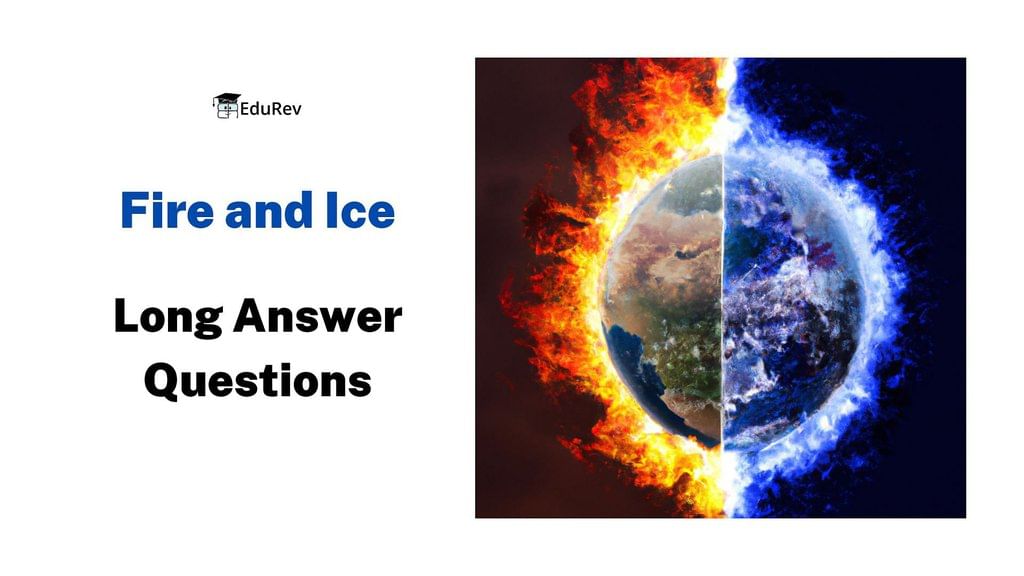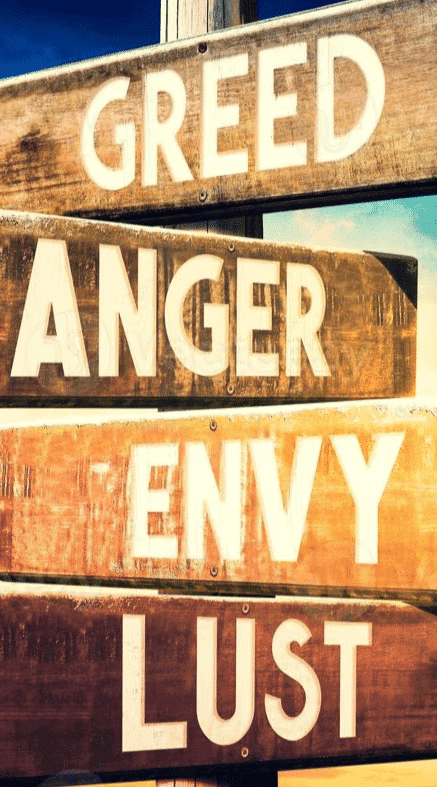Class 10 English Chapter 1 Question Answers - First Flight

Q.1. How does the poem depict the two contrasting ideas— ‘Fire’ and ‘Ice’? Can hatred destroy us and the world? Explain bringing out values that can make this world a better place to live in.
Ans. In this poem, Robert Frost refers to two contrasting ideas—'Fire' and 'Ice' as predictions of how the world will end. According to him, some people say that the world will end in a fire while others hold that this will end in ice. The poet equates desire with fire and hatred with ice. Both desire and hatred are growing at such a rapid speed that the world will come to an end either way.
Yes, hatred can destroy us and the world. Intolerance in behaviour creates hatred that leads to fury and cruelty. One becomes hard-hearted and insensitive to the feelings of others.
Love, brotherhood, tolerance, peace, contentment, sensitivity, benevolence, and generosity among people can make this world a better place to live in.
Q.2. What is the rhyme scheme of the poem? How does it help in bringing out the contrasting ideas in the poem?
Ans. The rhyme scheme of the poem is ABAB in the first stanza and ABAAB in the second stanza. The repetition of the same rhyme scheme in the first stanza emphasizes the theme of desire and destruction being two sides of the same coin, while the change in the rhyme scheme in the second stanza represents the contrasting idea of the world ending due to both fire and ice.
The first stanza of the poem begins with the line, "Some say the world will end in fire," which sets the tone for the rest of the poem. The rhyme scheme in this stanza is ABAB, and the repetition of the word "fire" in the first and last lines emphasizes the destructive power of fire. The second line, "Some say in ice," introduces the contrasting element of ice and sets up the contrast between fire and ice that is explored throughout the poem. The use of the word "desire" in the third line further emphasizes the destructive power of fire, as desire can lead to destruction. The final line, "From what I've tasted of desire," reinforces this idea and suggests that desire can be dangerous and destructive.
The second stanza of the poem begins with the line, "I think I know enough of hate," which introduces the contrasting element of hate and sets up the contrast between hate and desire that is explored throughout the stanza. The rhyme scheme in this stanza is ABAAB, which is different from the rhyme scheme in the first stanza, and this change in the rhyme scheme emphasizes the contrast between the two stanzas. The repetition of the word "ice" in the first, third, and fifth lines emphasizes the destructive power of ice, and the use of the word "great" in the second line emphasizes the magnitude of this destruction. The final line, "And would suffice," suggests that either fire or ice could bring about the end of the world and that both are equally destructive.

Q.3. There are many ideas about how this world will come to an ‘end’. What are they? Do you agree with the poet and his understanding of the poet and his understanding of the issue in this regard?
Ans. Almost all think that this world will end at one time or the other. Everything that has a beginning or origin will indeed come to an end too. There are many ideas about how this world will come to an end. Some think that ‘fire’ will be the cause of the ‘end’ of the world. Others believe that ‘ice’ will bring the end of the world. Both of these ideas have valid reasons. The poet sides and stands with those who believe that ‘fire’ will be the cause of the ‘end’. The poet is well aware of how the ‘fire’ of unbridled passions, desires, lust, and fury can lead to the destruction of humanity and the world. But the other view is equally convincing. Cold and ‘icy’ reasoning can create insensitiveness, rigidity, frigidity, and indifference in man. Ultimately, it breeds ‘hatred’ and contempt. This kind of ‘icy’ reasoning which is devoid of all human warmth, sympathy, love, and understanding will only bring destruction and death to this world.
I believe that both ‘fire’ and ‘ice’ have a strong potential to bring disasters and destruction to the world.
Q.4. What do the metaphors of ‘ice’ and ‘fire’ convey to the readers? Don’t they represent the two extremes of human behaviour that can lead to the destruction and death of this world? What is the message that the poet wants to give to the readers?
Ans. The poet has touched on the universal issue of the ending of this existing world. He gives a message as well as a warning to human beings. Man is swaying between two extremes — ‘fire’ and ‘ice’. Sometimes he is torn by his unbridled fire of passions, desires, lusts, longings, and fury. This results in greed, avarice and passionate love. All such extremes can lead to unavoidable conflicts and disasters. If not controlled, they can help in bringing an early end to this world.
The other extreme behaviour of human beings is born out of cold and ‘icy’ reasoning. When our cold reasoning becomes completely devoid of human warmth, feelings, love, and sympathy, it breeds hatred. Hatred born out of cold indifference, insensitivity and rigidity is strong enough to cause the end of this world. Humanity can redeem itself and possibly save or delay the end of the world by giving up such extremes of thinking and behaviour.

|
61 videos|617 docs|69 tests
|
FAQs on Class 10 English Chapter 1 Question Answers - First Flight
| 1. What is the meaning of the poem Fire and Ice by Robert Frost? |  |
| 2. What is the significance of fire and ice in the poem? |  |
| 3. What is the tone of the poem Fire and Ice? |  |
| 4. What is the central theme of the poem Fire and Ice? |  |
| 5. What is the message of the poem Fire and Ice? |  |

















